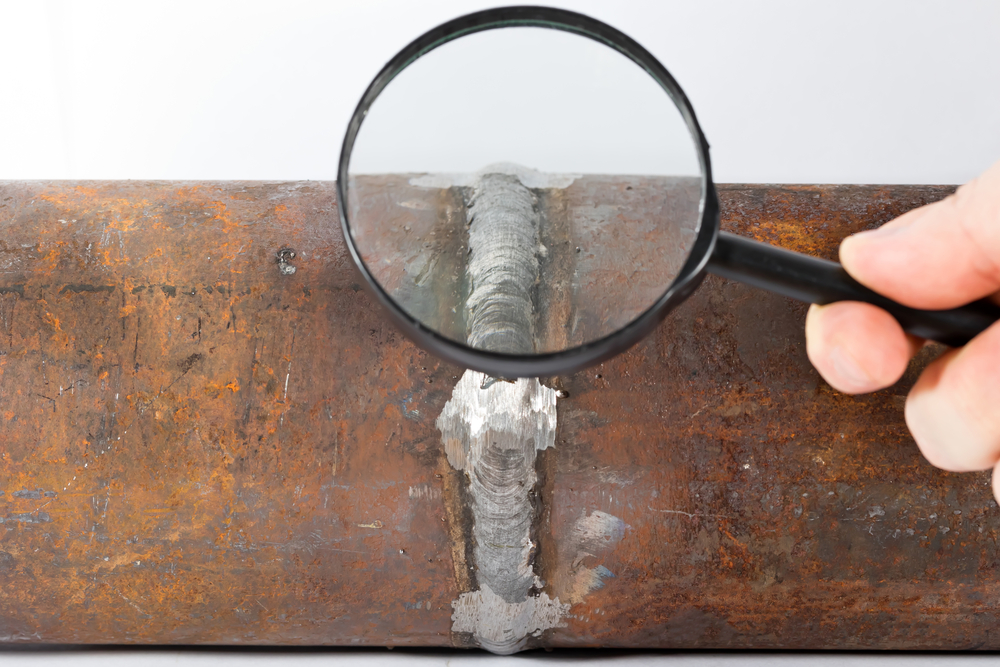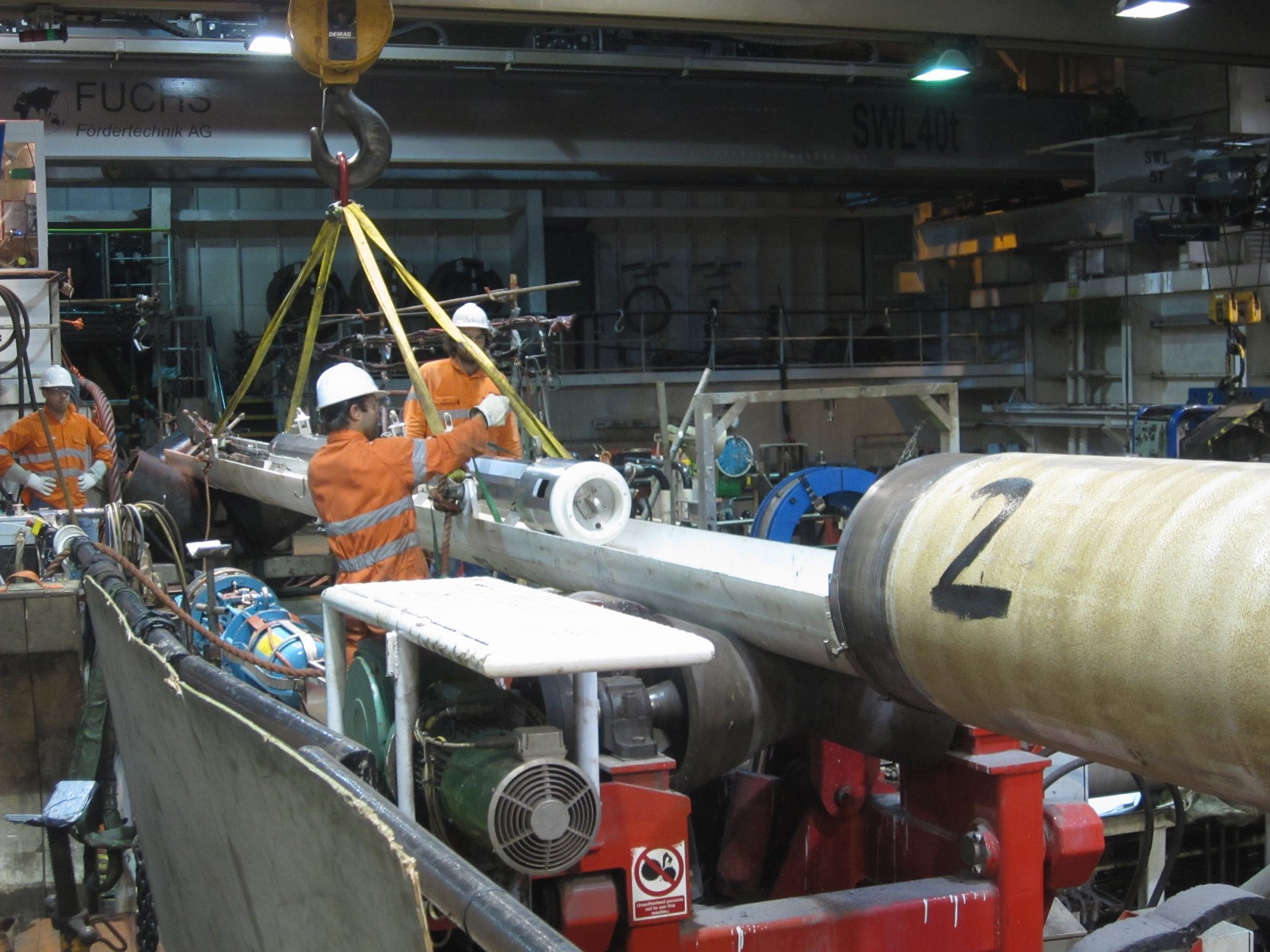Comprehensive Overview to Pipeline Welding Assessment: Ensuring Integrity and Safety in Pipe Construction and Upkeep
The integrity and security of pipes are paramount in today's facilities landscape, underscoring the vital function of welding assessment in pipe building and construction and upkeep. A detailed guide on this subject not just highlights the need of evaluating weld top quality however additionally attends to the various assessment techniques readily available, such as ultrasonic and radiographic testing. By comprehending typical issues and their effects, stakeholders can implement best practices that guarantee compliance and durability. Nonetheless, the complexities involved in welding evaluation raising significant questions about market criteria and the advancing innovations that might redefine these practices.

Significance of Welding Inspection
Welding inspection plays a crucial duty in making sure the integrity and safety of pipe systems. It works as a basic process that verifies the quality and integrity of welded joints, which are commonly one of the most weak spots in pipeline building and construction. Via methodical analysis, inspectors can recognize prospective defects such as fractures, porosity, and insufficient blend, which may endanger the structural integrity of the pipeline.
The relevance of welding examination expands past simple compliance with industry standards; it likewise safeguards public health and wellness and the setting. Comprehensive evaluations can enhance the long life of pipeline systems, reducing the demand for expensive repair services and downtime.
In addition to making certain safety and security and compliance, welding assessment cultivates a society of high quality guarantee within companies. By prioritizing assessment throughout the welding procedure, business can build a reputation for reliability and excellence, inevitably causing enhanced consumer confidence and organization chances (Pipeline Welding Inspection). Thus, the relevance of welding inspection can not be overemphasized in the context of pipeline building and construction and maintenance
Secret Welding Processes
Different welding processes are utilized in pipeline building and construction, each with its own benefits and applications. Among one of the most commonly made use of techniques are Secured Metal Arc Welding (SMAW), Gas Tungsten Arc Welding (GTAW), and Gas Steel Arc Welding (GMAW) SMAW is favored for its convenience and ability to do well in numerous environmental problems, making it ideal for area applications.
GTAW, commonly referred to as Tungsten Inert Gas (TIG) welding, is acknowledged for its capacity to produce high-quality welds with exceptional control over warmth input, making it optimal for thin-walled pipelines and stainless steel materials. GMAW, or Metal Inert Gas (MIG) welding, supplies high deposition prices and is effective for massive tasks, frequently used in the manufacture of pipelines in regulated environments.
Furthermore, Submerged Arc Welding (SAW) is used for its deep penetration and high productivity, especially in the building and construction of large-diameter pipelines. Each of these processes adds to the general stability and security of pipe building and constructions, enabling welders to choose one of the most suitable technique based on material type, project demands, and environmental conditions. Comprehending these crucial welding procedures is important for effective pipeline welding inspection.
Common Defects and Their Impact

Porosity, defined by small gas pockets trapped within the weld, damages the material and can bring about leakages. Fractures, which may take place due to thermal tensions or improper cooling, can circulate and result in structural failure under stress. Undercutting, where the base steel is worn down along the weld bead, lowers the efficient cross-section of the pipeline, boosting the danger of fracture.
Insufficient combination takes place when the weld steel does not appropriately bond with the base metal, causing weak areas that might stop working under stress. Slag addition, the entrapment of non-metallic material within the weld, can likewise compromise the joint's integrity. Determining and addressing these flaws early in the building and construction procedure is vital to guaranteeing the lasting integrity and safety and security of pipeline systems, consequently safeguarding both the atmosphere and the framework.
Inspection Strategies and Devices

Visual inspection is the initial line of protection, permitting assessors to recognize surface irregularities, imbalance, or various other visible problems. Ultrasonic testing uses high-frequency sound waves to discover internal flaws, giving exact deepness dimensions and characterizing issues without damaging the weld. Radiographic screening makes use of X-rays or gamma rays to create photos of the weld, allowing the identification of internal gaps, cracks, or incorporations.
Magnetic bit testing is specifically efficient for discovering surface area and near-surface stoppages in ferromagnetic materials. This strategy includes using an electromagnetic field and great iron bits to the weld, revealing flaws through the buildup of particles at imperfection sites.
In enhancement to these techniques, specialized devices such as automated ultrasonic testing devices and electronic radiography systems enhance examination accuracy and performance, guaranteeing a thorough examination of pipe welds during building and construction and upkeep.
Finest Practices for Conformity
Following best methods for conformity in pipeline welding evaluation is critical for guaranteeing the stability and safety and security of the infrastructure. Organizations needs to develop a comprehensive high quality administration system that straightens with industry standards such as ASME, API, and AWS. This includes establishing in-depth welding treatments that define the materials, techniques, and about his certifications needed for welders.
Regular training and certification of evaluation workers are necessary to keep high expertise degrees. Examiners ought to know with various non-destructive testing (NDT) approaches, including ultrasonic testing, radiographic testing, and visual examination, to effectively recognize possible more info here flaws.
Paperwork plays an important role in conformity; keeping precise records of inspections, weld treatments, and workers qualifications helps to make certain traceability and responsibility. Arranged audits and reviews of welding techniques must be conducted to recognize locations for improvement and make certain adherence to developed protocols.

Verdict
In verdict, the execution of rigorous welding inspection protocols is extremely important for ensuring the integrity and safety and security of pipeline building and maintenance. Constant enhancement in assessment procedures will certainly add to the longevity and integrity of pipeline systems, underscoring the crucial function of welding evaluation in the industry.
The integrity and safety of pipes are extremely important in today's framework landscape, highlighting the vital function of welding evaluation in pipeline building and construction and upkeep. Comprehending these essential welding processes is essential for reliable pipe welding evaluation.
Adhering to best techniques for compliance in pipe welding assessment is important for guaranteeing the integrity and safety and try these out security of the facilities.In conclusion, the execution of extensive welding inspection methods is extremely important for ensuring the honesty and security of pipeline building and construction and maintenance. Continual enhancement in inspection procedures will contribute to the durability and reliability of pipe systems, underscoring the essential function of welding examination in the market.